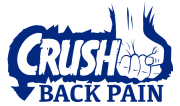Lower back pain after squats is usually the result of repetitive lumbar flexion under load
The most simple way to address lower back pain after squatting is to limit or avoid lumbar flexion during the squat movement. This can be done by not squatting as deeply. Often times though people still get too much flexion while squatting. This usually results from range of motion restrictions in other parts of the kinetic chain.
This video covers how to address hip flexion and ankle dorsiflexion range of motion restrictions
If the body is not flexing enough through the hips or dorsiflexing enough through the ankles the motion to squat down and stand up has to come from somewhere. That somewhere is the lower back. When you add load to repetitive lumbar flexion lower back pain is inevitable.
Optimizing hip flexion, ankle dorsiflexion, and core stability will allow the lumbar spine to remain stable while squatting. This results in the ability to squat without lower back pain becoming an issue.
To improve hip flexion start out with a simple hamstring stretch
The hamstrings extend the hip, when they’re tight they will limit hip flexion. The doorway stretch is an easy way to stretch the hamstrings while keeping the lower back neutral.
You don’t want to let the lower back round out into the floor, this is lumbar flexion and will exacerbate lower back pain. So keep the lumbar spine in a position where you can put your hand under your back, don’t let it push down into the floor. This will also stretch the hamstrings more effectively. Shoot for two or three sixty to ninety second holds on each side.
Another effective way to improve hip flexion is to use the squat rack with a bar
Set up the bar at the same level you use to squat. Grab onto it and drop down into a full squat. Use the bar to keep your lower back neutral to extended, this way it won’t round out and flex at all. All the motion will come from your hips. Get down in this position and hold it for sixty to ninety seconds. You can also move up and down in the bottom position to take the hips to end-range flexion.
To improve ankle dorsiflexion work on mobilizing the ankle into dorsiflexion
This can be done in standing or half kneeling. Focus on bringing the tibia over the second toe and on keeping the heel on the ground. Shoot for one or two sets of ten to twelve reps on each side.
A belt is also a great way to stabilize the lumbar spine and keep it neutral when squatting
Especially with higher weights and higher volume squat work. The belt allows you to effectively pressurize the abdominal cylinder for greater stability and limited flexion.
Core stability training is another effective way to limit lumbar flexion while squatting
Start out working on optimizing hip flexion and ankle dorsiflexion in order to limit lumbar flexion during the squat.
A great way to warm-up before squatting is to do a couple sets of cossack squats
These will open up the hips into flexion and the ankles into dorsiflexion. Aim for two sets of 8-10 reps on each side.
If the back is still painful after squatting experiment with a belt and commit to a lumbar stabilization program.


